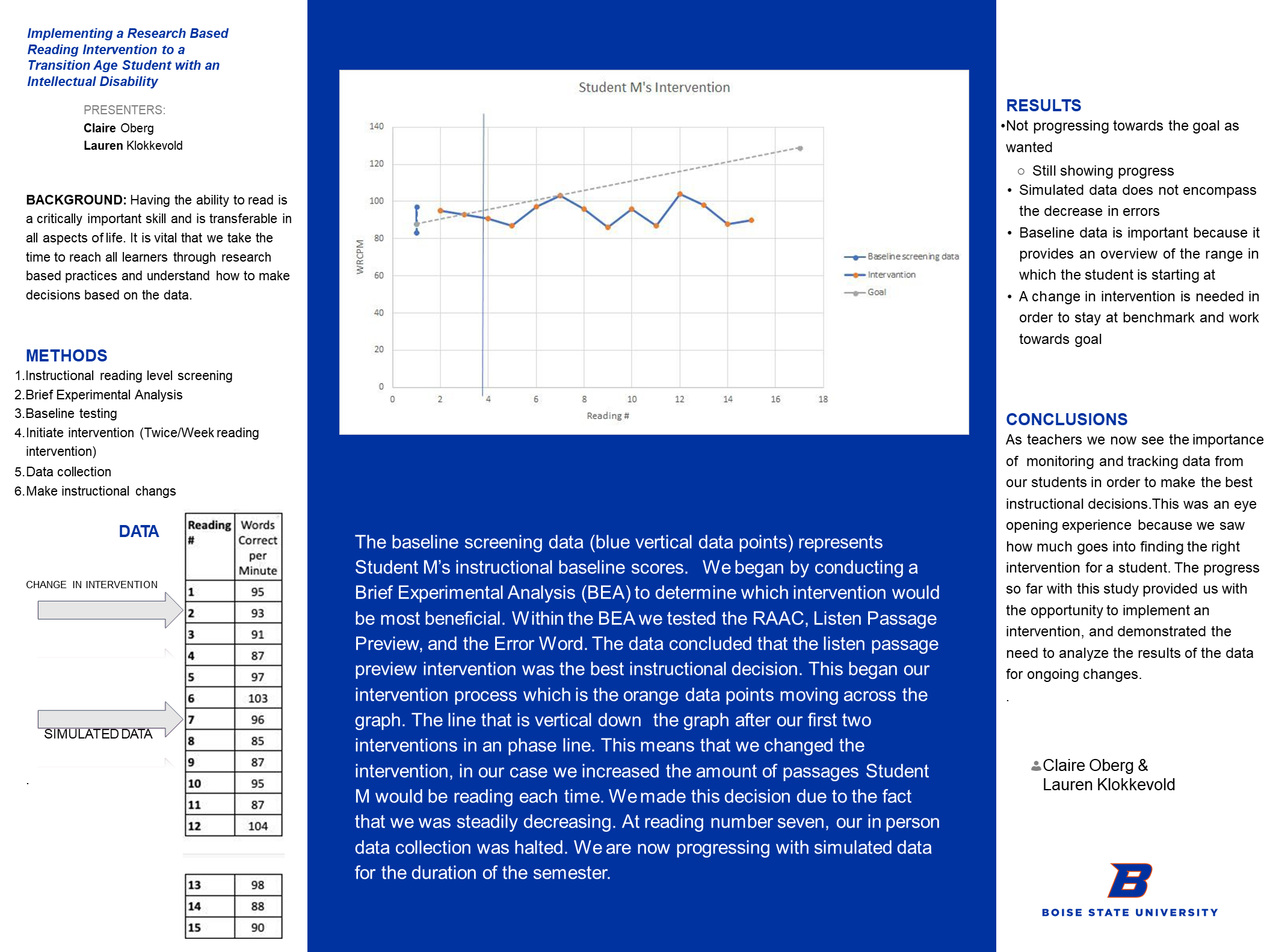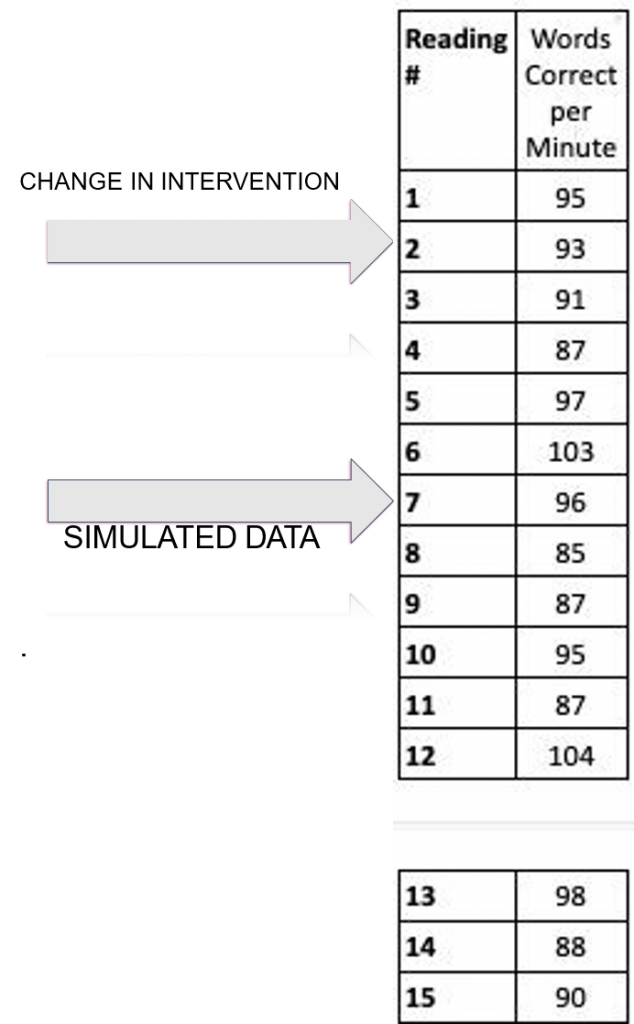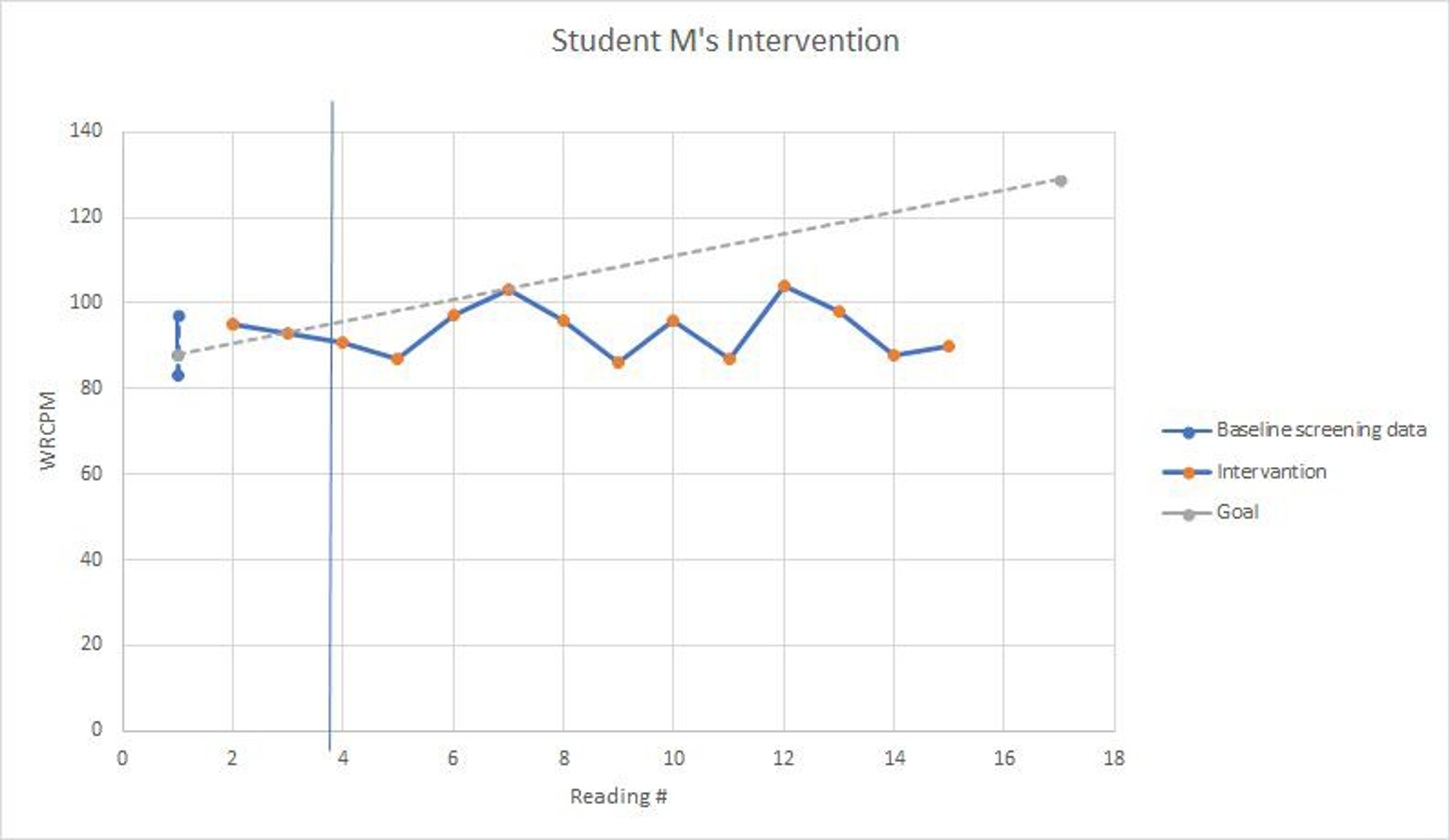Claire Oberg, Lauren Klokkevold, Dr. Jeremy W. Ford

Background
Having the ability to read is a critically important skill and is transferable in all aspects of life. It is vital that we take the time to reach all learners through research based practices and understand how to make decisions based on the data.
Methods
- Instructional reading level screening
- Brief Experimental Analysis
- Baseline testing
- Initiate intervention (Twice/Week reading intervention)
- Data collection
- Make instructional changes
Data

Student M’s Intervention

The baseline screening data (blue vertical data points) represents Student M’s instructional baseline scores. We began by conducting a Brief Experimental Analysis (BEA) to determine which intervention would be most beneficial. Within the BEA we tested the RAAC, Listen Passage Preview, and the Error Word. The data concluded that the listen passage preview intervention was the best instructional decision. This began our intervention process which is the orange data points moving across the graph. The line that is vertical down the graph after our first two interventions in an phase line. This means that we changed the intervention, in our case we increased the amount of passages Student M would be reading each time. We made this decision due to the fact that we was steadily decreasing. At reading number seven, our in person data collection was halted. We are now progressing with simulated data for the duration of the semester.
Results
- Not progressing towards the goal as wanted but still showing progress
- Simulated data does not encompass the decrease in errors
- Baseline data is important because it provides an overview of the range in which the student is starting at
- A change in intervention is needed in order to stay at benchmark and work towards goal
Conclusions
As teachers we now see the importance of monitoring and tracking data from our students in order to make the best instructional decisions.This was an eye opening experience because we saw how much goes into finding the right intervention for a student. The progress so far with this study provided us with the opportunity to implement an intervention, and demonstrated the need to analyze the results of the data for ongoing changes.
Additional Information
For questions or comments about this research, contact Claire Oberg at claireoberg@u.boisestate.edu.